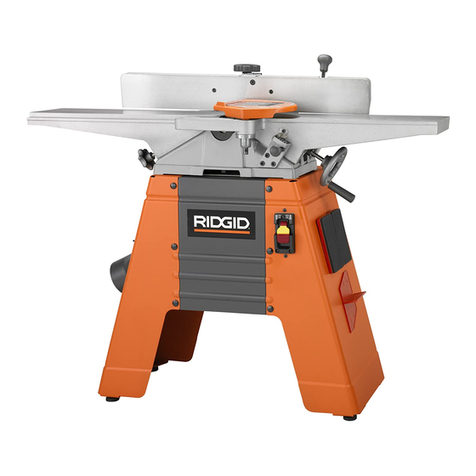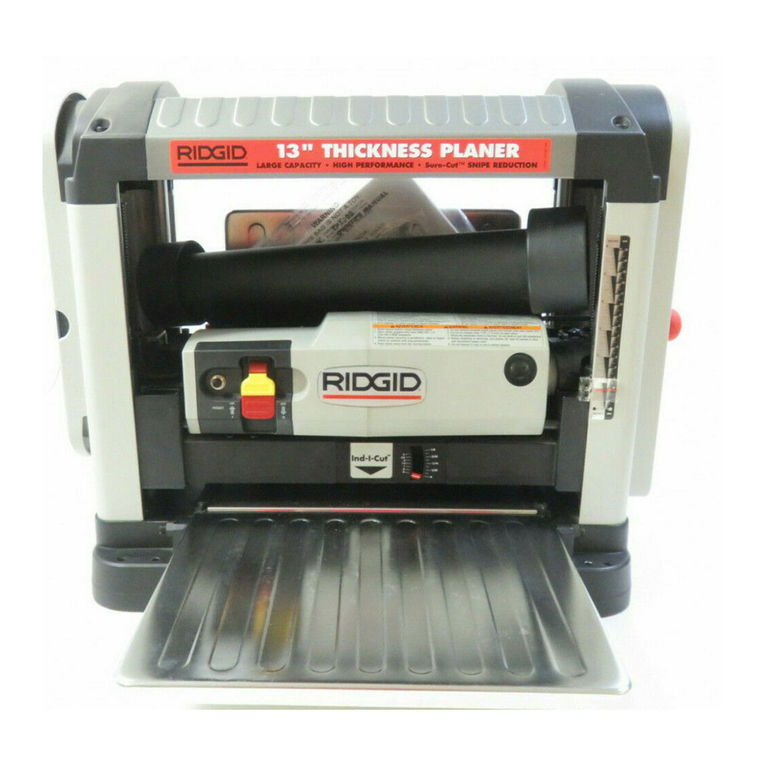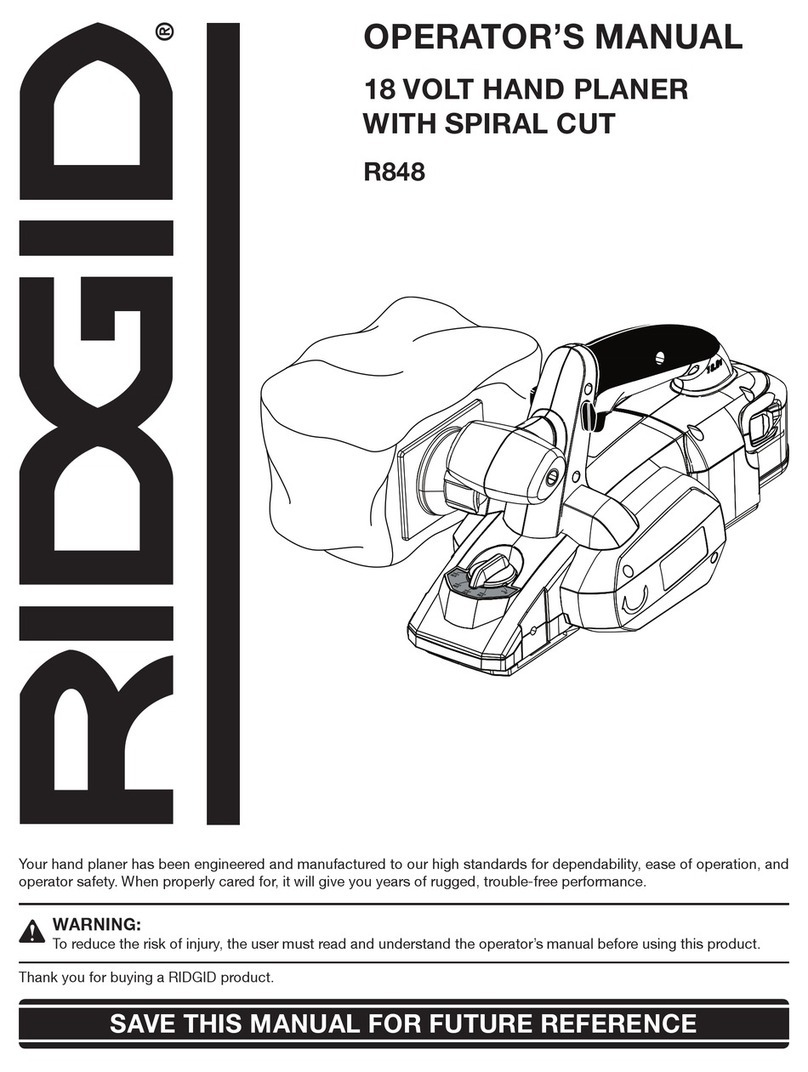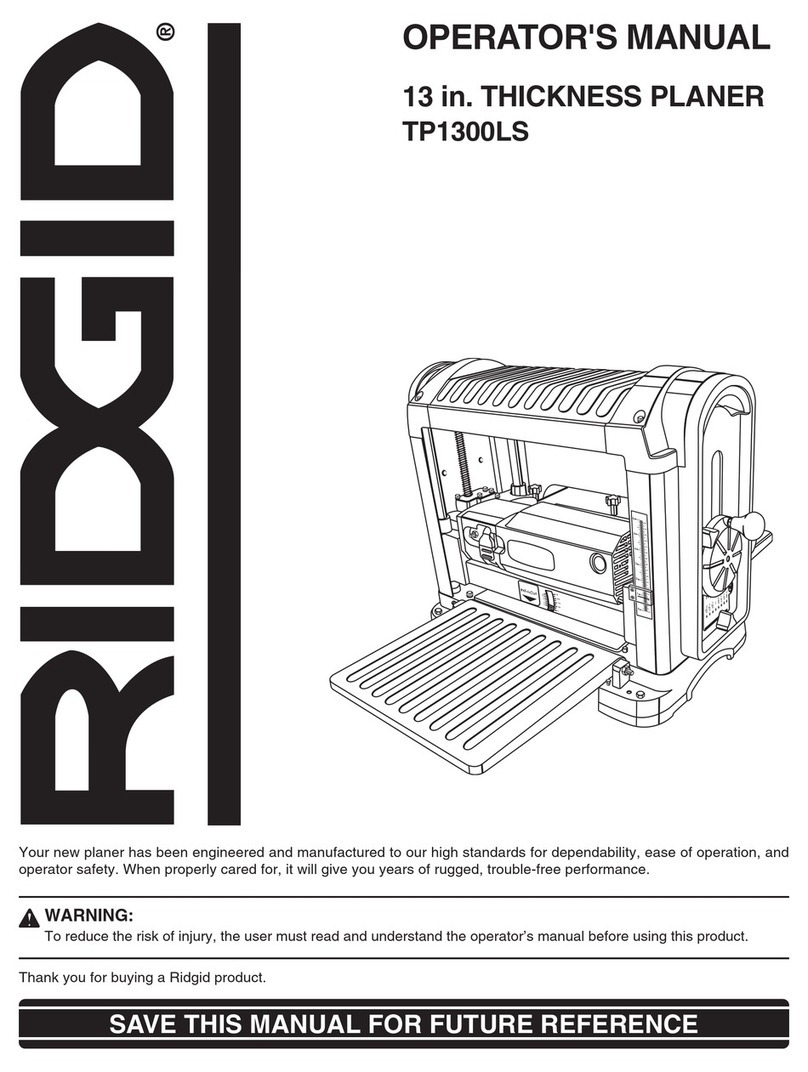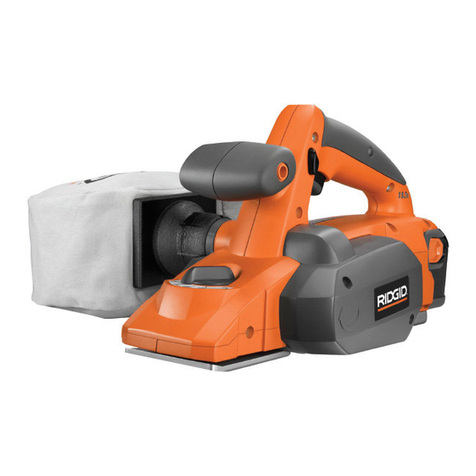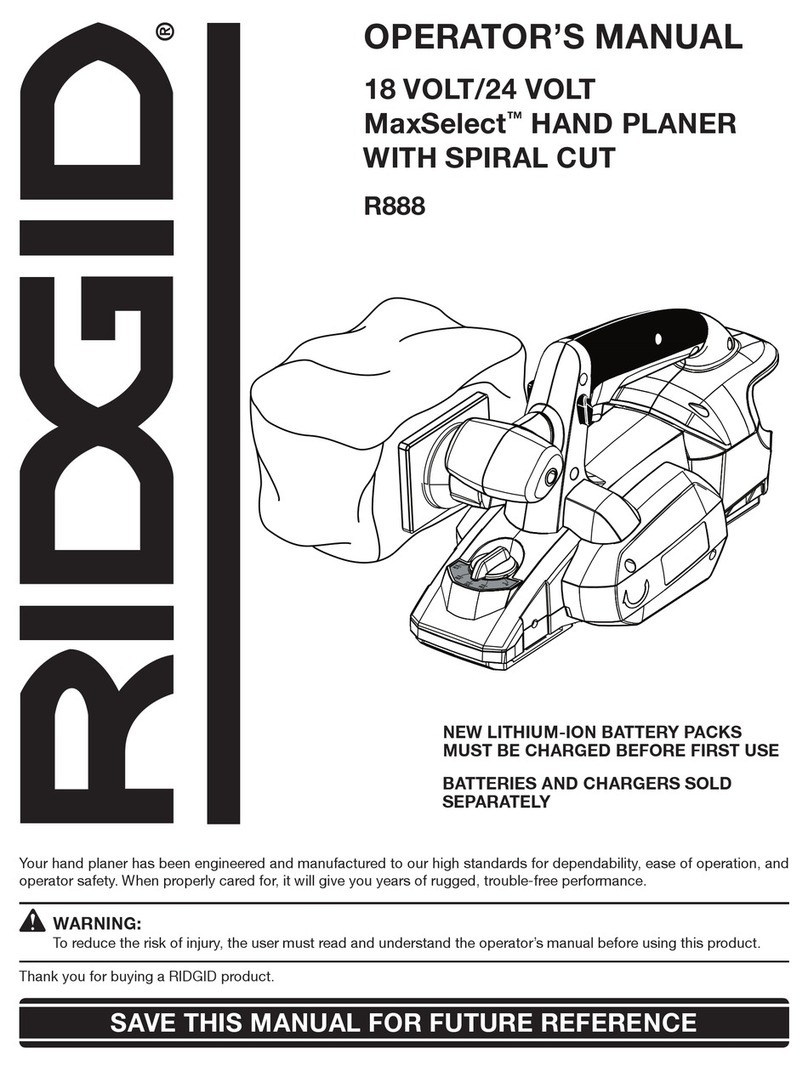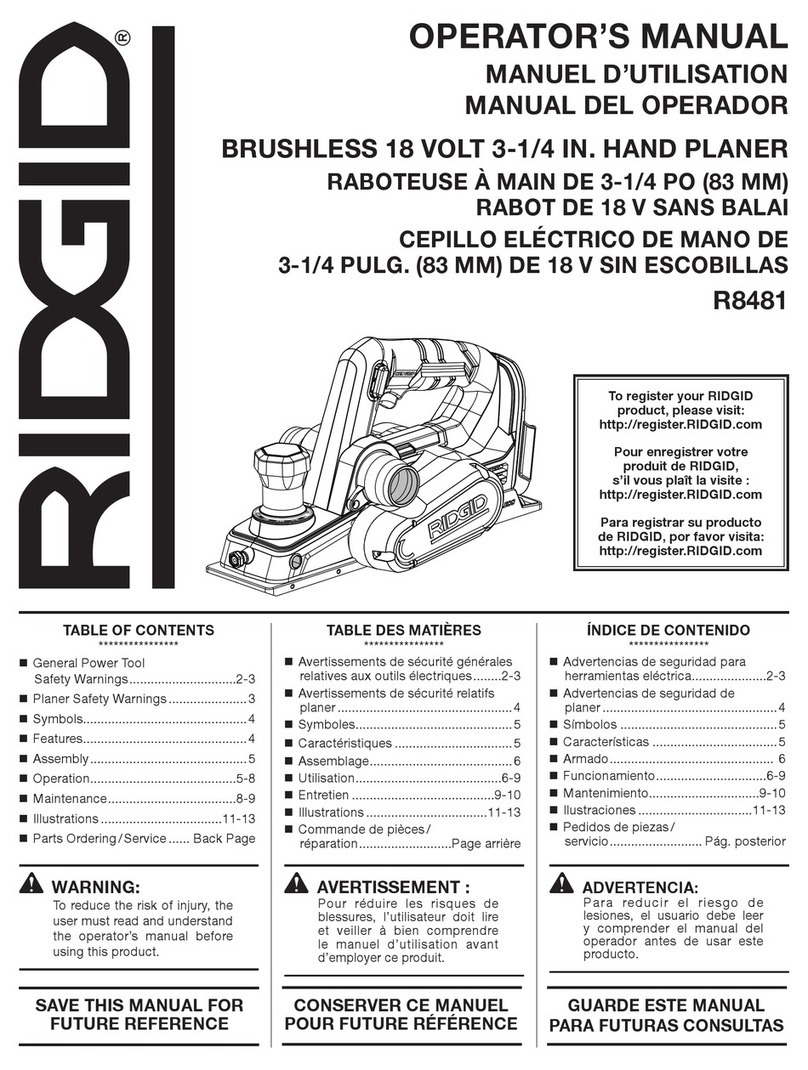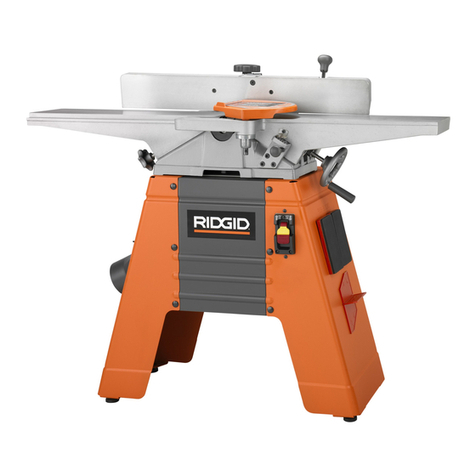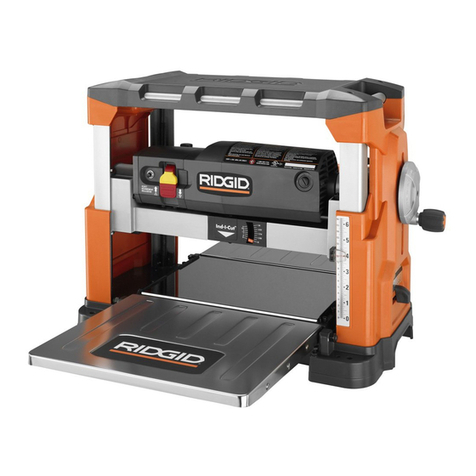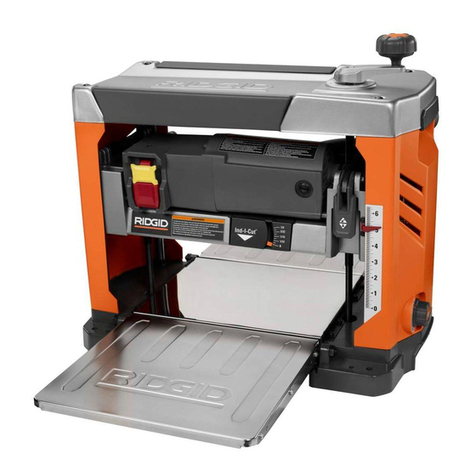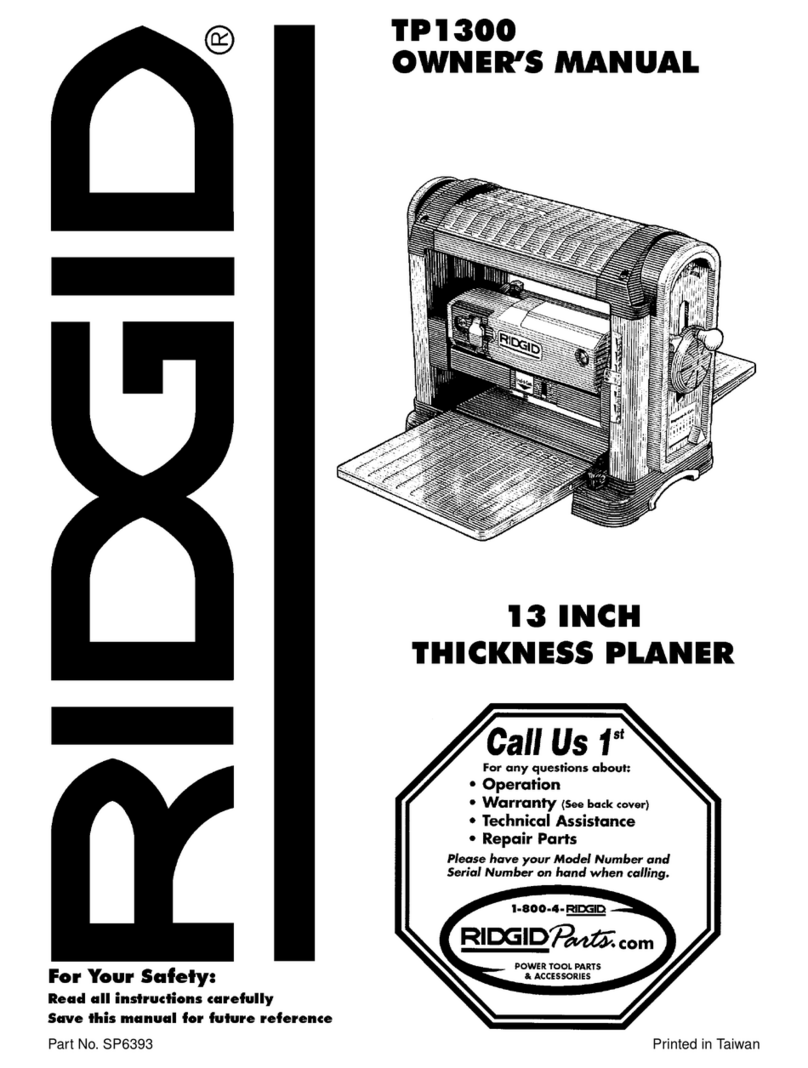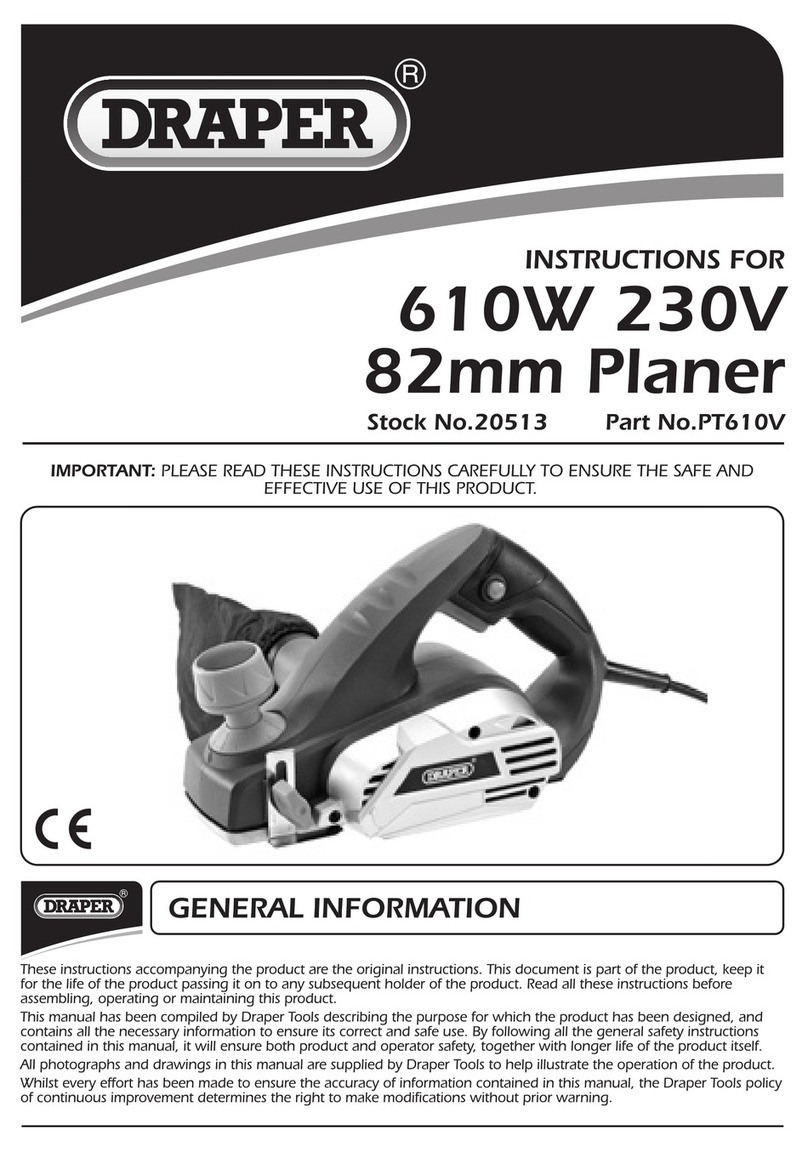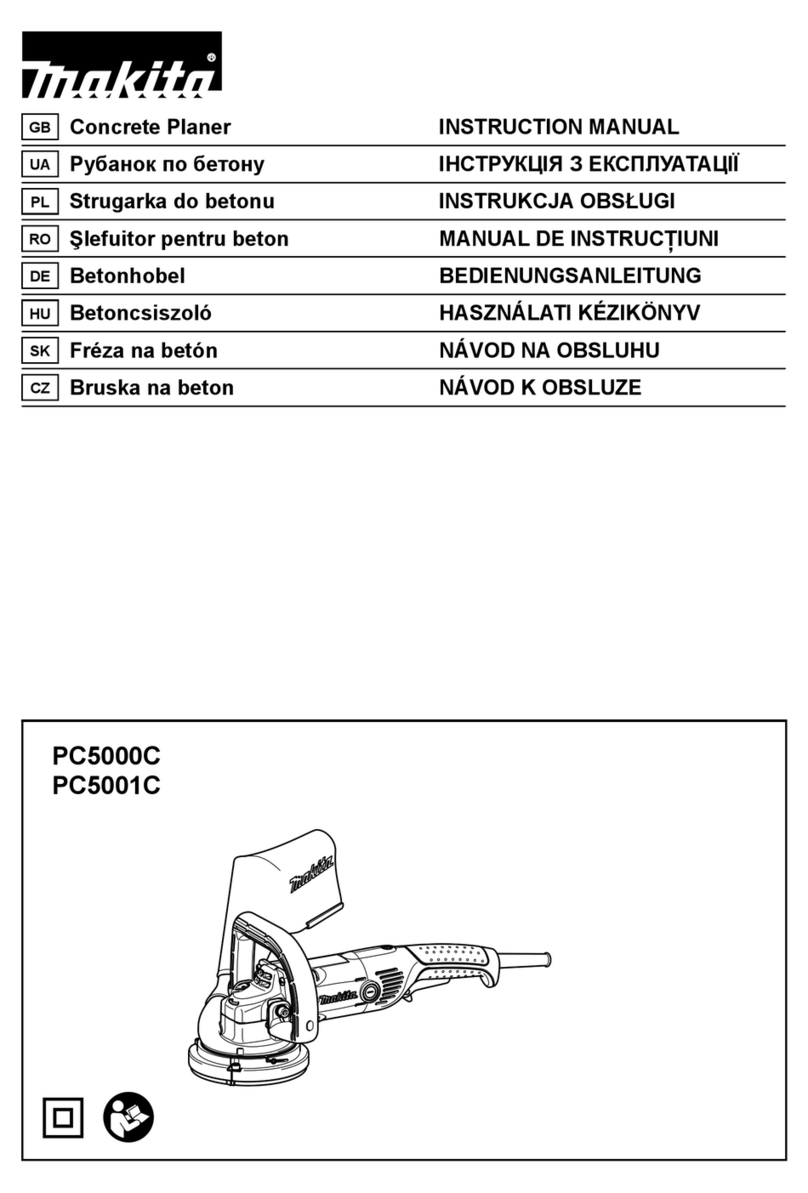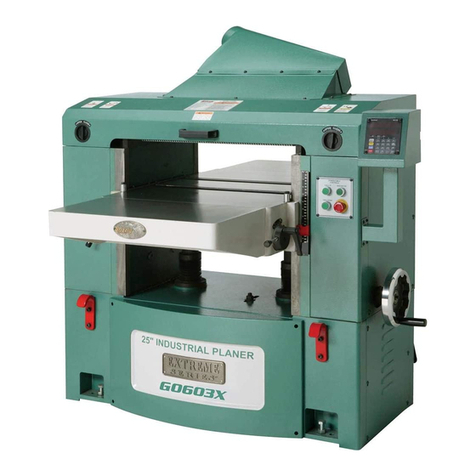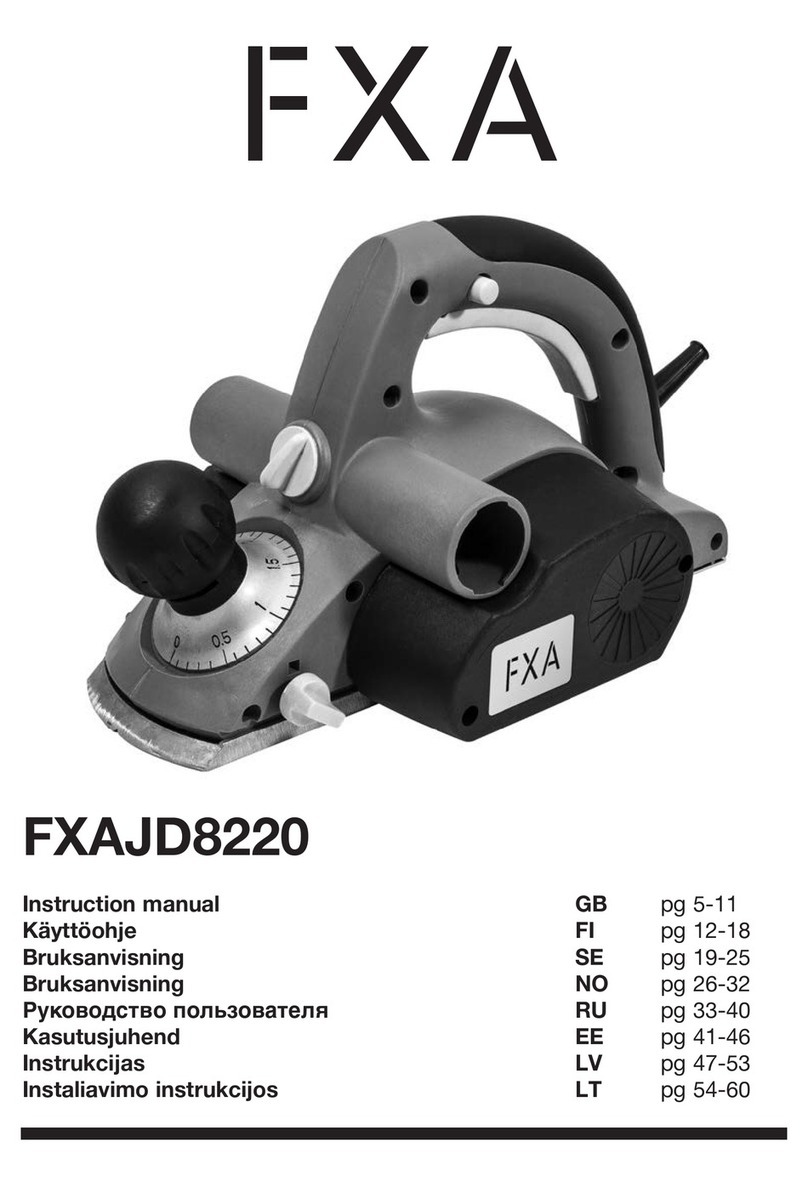6
Motor Specifications and Electrical Requirements
Power Supply and Motor Specifications
WARNING: To reduce the risk of electrical hazards,
fire hazards or damage to the tool, use proper cir-
cuit protection. Your tool is wired at the factory for
operation using the voltage shown. Connect tool
to a power line with the appropriate voltage and a
15-amp branch circuit. Use a 15-amp time delay
type fuse or circuit breaker. To reduce the risk of
shock or fire, replace power cord immediately if it
is worn, cut, or damaged in any way.
The A-C motor used on this tool is an universal non-revers-
ible type, having the following specifications:
General Electrical Connections
DANGER: To reduce the risk of electrocution:
1. Use only identical replacement parts when ser-
vicing. Servicing should be performed by a
qualified service technician.
2. Do not use in rain or where floor is wet. This
tool is intended for indoor use only.
WARNING To reduce the risk of electrical shock do
not permit fingers to touch the terminals or plug
when installing or removing the plug to or from the
outlet.
If power cord is worn or cut, damaged in any way, have it
replaced immediately.
110-120 Volt, 60 Hz. Tool Information
NOTE: The plug supplied on your tool may not fit into the
outlet you are planning to use. Your local electrical code
may require slightly different power cord plug connec-
tions. If these differences exist refer to and make the
proper adjustments per your local code before your tool is
plugged in and turned on.
In the event of a malfunction or breakdown, grounding
provides a path of least resistance for electric current to
reduce the risk of electric shock. This tool is equipped
with an electric cord having an equipment grounding con-
ductor and a grounding plug, as shown. The plug must be
plugged into a matching outlet that is properly installed
and grounded in accordance with all local codes and
ordinances.
Do not modify the plug provided. If it will not fit the outlet,
have the proper outlet installed by a qualified electrician.
A temporary adapter may be used to connect this plug to
a 2-pole outlet, as shown, if a properly grounded outlet is
not available. This temporary adapter should be used
only until a properly grounded outlet can be installed by a
qualified electrician. The green colored grounding lug
extension from the adapter must be connected to a per-
manent ground such as a properly grounded outlet box.
Improper connection of the equipment grounding con-
ductor can result in a risk of electric shock. The conduc-
tor with insulation having an outer surface that is green
with or without yellow stripes is the equipment grounding
conductor. If repair or replacement of the electric cord or
plug is necessary, do not connect the equipment-ground-
ing conductor to a live terminal.
If the grounding instructions are not completely under-
stood, or if you are in doubt as to whether the tool is prop-
erly grounded check with a qualified electrician or service
personnel .
WARNING: If not properly grounded, this tool can
cause an electrical shock, particularly when used
in damp locations, in proximity to plumbing, or out
of doors. If an electrical shock occurs there is the
potential of a secondary hazard, such as your
hands contacting the knives.
NOTE: The adapter illustrated is for use only if you already
have a properly grounded 2-prong outlet.
NOTE: In Canada the use of a temporary adapter is not
permitted by the Canadian Electrical Code.
Voltage 110-120
Amperes 15
Hertz (Cycles) 60
Phase Single
Cuts per minute-CPM 18,000
Rotation of Shaft Clockwise
3-Prong
Adapter
2-Prong
Outlet
Make sure this
Is Connected
Ground
Plug
Green to a Known
Grounding Lug
Properly
Grounded
Outlet
3-Prong Plug
Grounding
Prong
